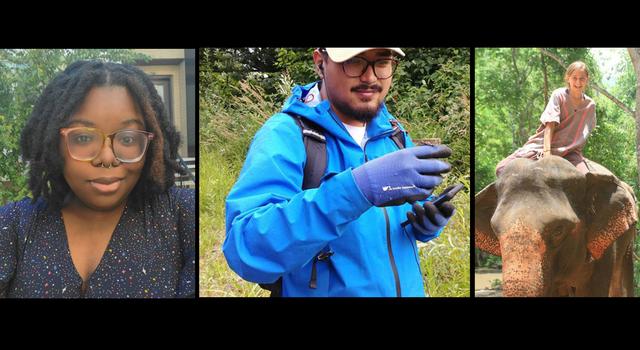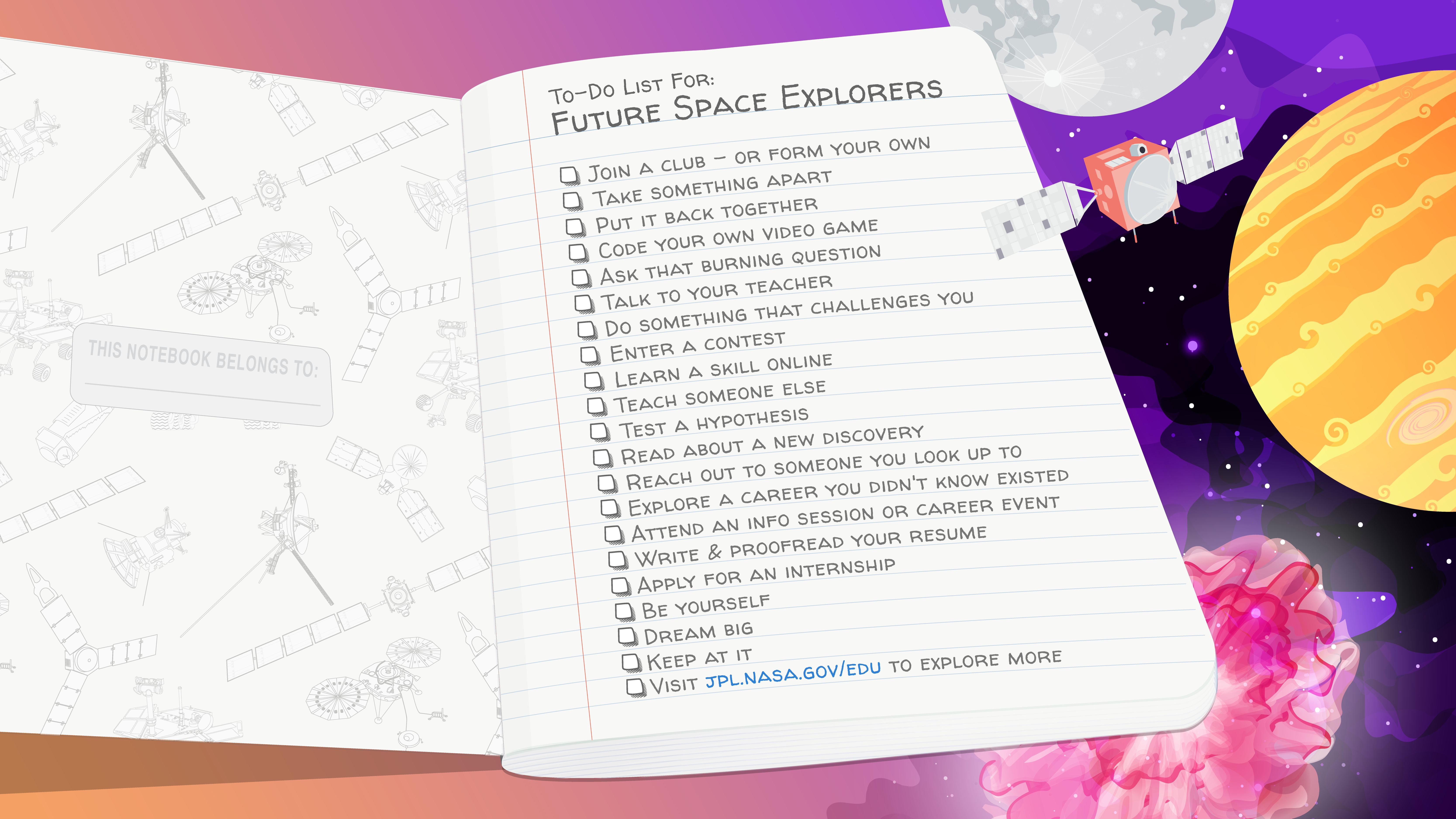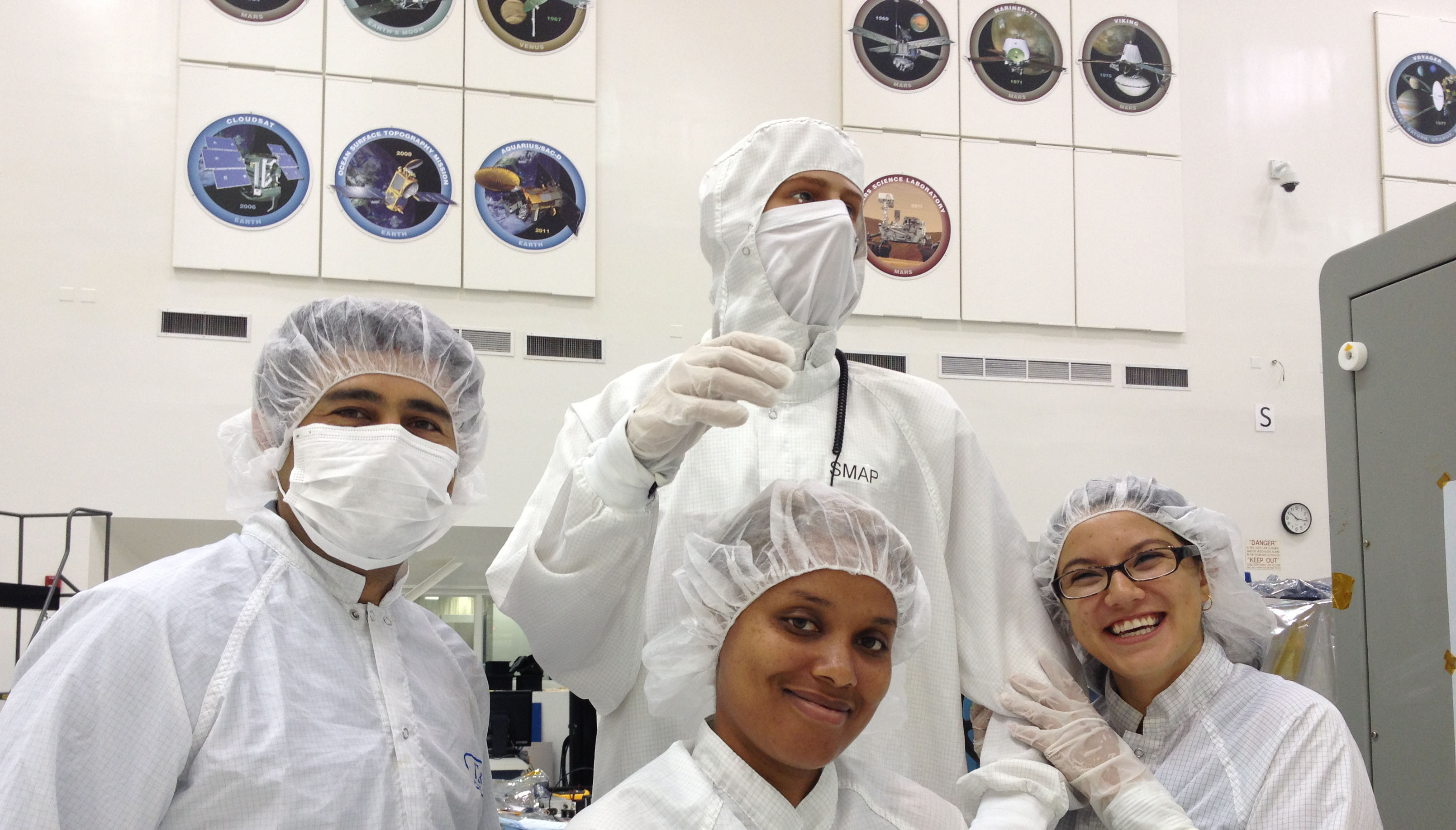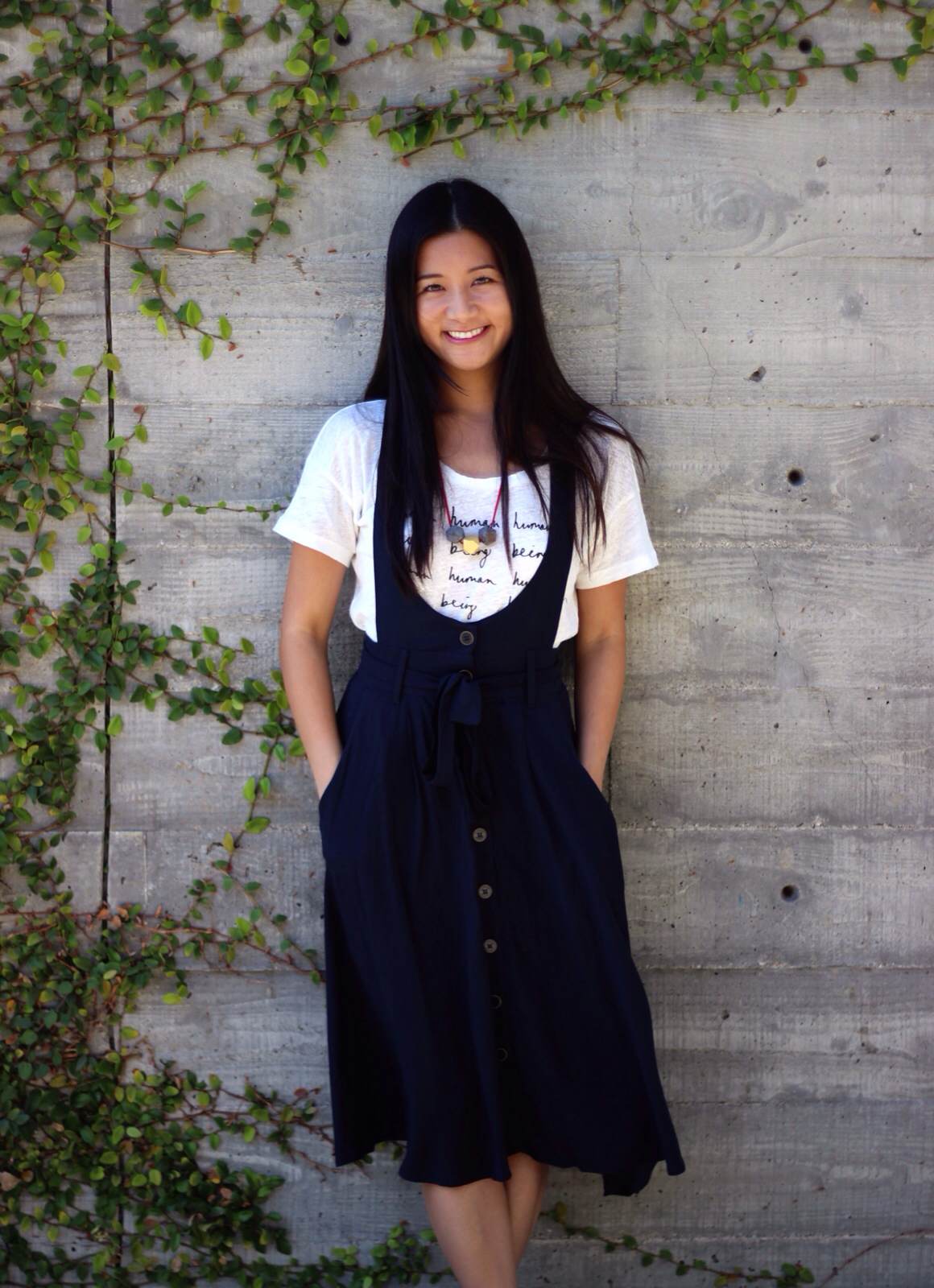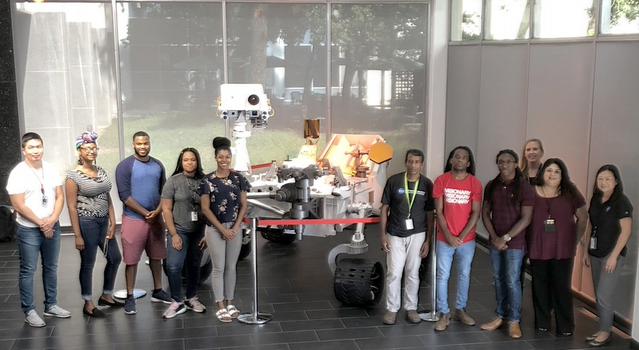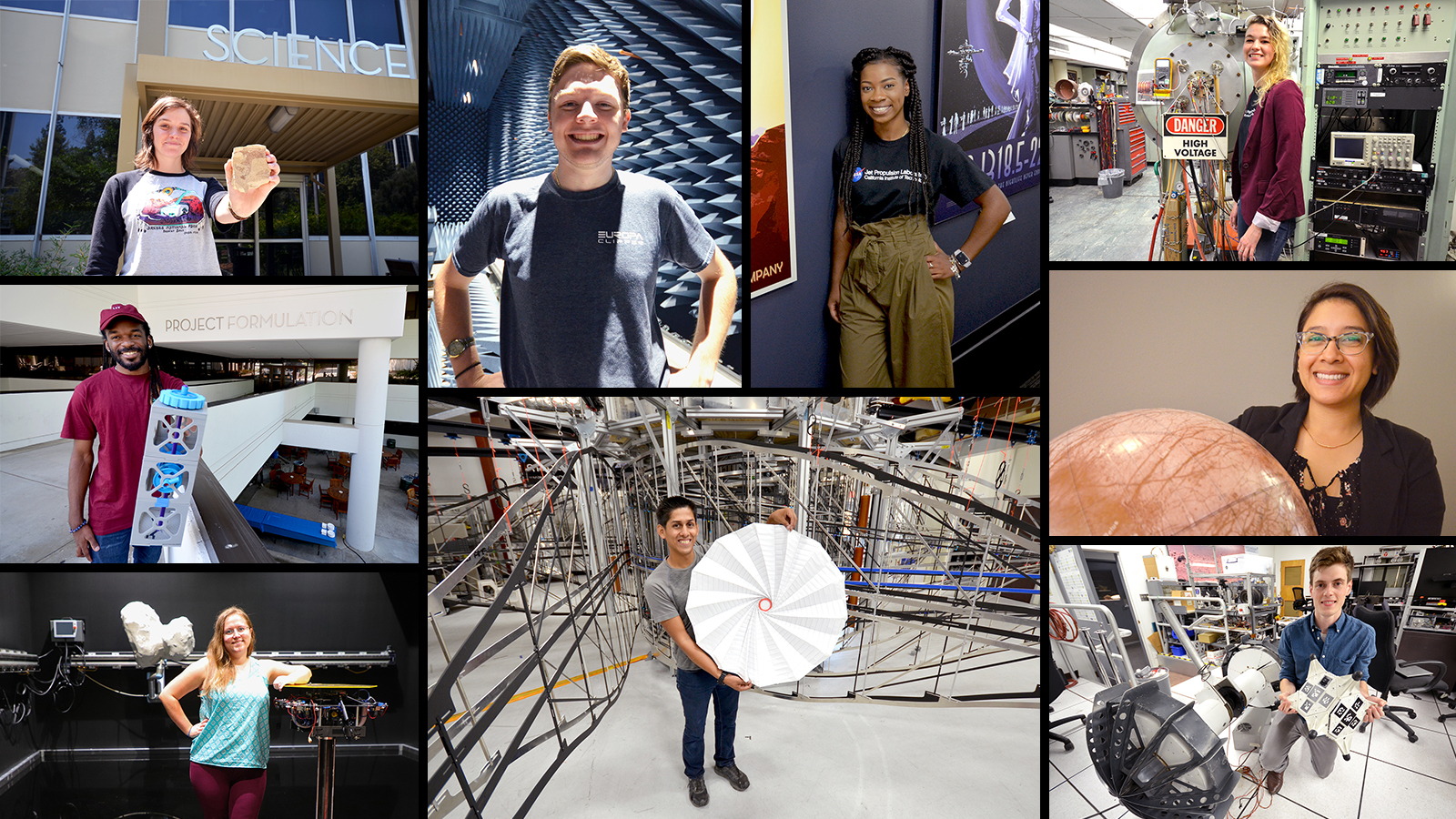Meet JPL Interns | March 22, 2022
The JPL Interns Protecting Earth's Future
We went behind the scenes with three interns on NASA’s Earth System Observatory team to learn how they're devoting their future careers to putting our planet first.
Leave it to the interns at NASA's Jet Propulsion Laboratory to school the full-timers. Case in point: JPL intern Joalda Morancy knows exactly how to explain—in bite-sized, plain English—NASA’s latest multi-missioned initiative to study our home planet.
“The Earth System Observatory aims to tackle one of the biggest issues we’re facing today—climate change,” they say of NASA's ESO. “We need to have multiple missions that look at the Earth system as a whole in order to tackle the issue of climate change in the next couple of decades.”
The observatory will be made up of an array of satellites, instruments, and missions to form a well-rounded collection of observations meant to offer crucial and precise measurements of our environment. As NASA puts it: “Taken together, as a single observatory, we will have a holistic, 3-dimensional understanding of our Earth’s systems—how they work together, how one change can influence another.”
While the ESO is in its early stages, it’s a crucial time for interns to be involved, as their generation will most likely face the most pressing challenges resulting from climate change. We spoke to three JPL interns getting first-hand experience with the observatory's missions and projects to learn why, to them, Earth is the most important planet to study right now.
Joalda Morancy
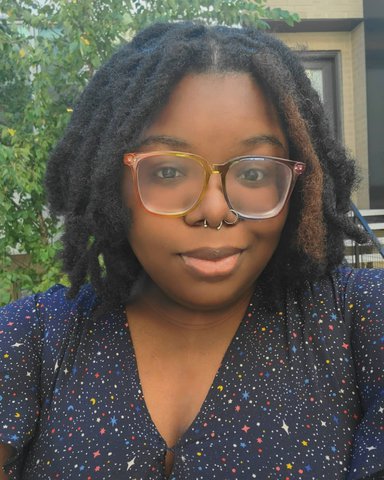
Image courtesy: Joalda Morancy | + Expand image
Morancy first became fascinated by space exploration in high school thanks to a YouTube video on how to make a peanut butter and honey sandwich in space.
“I love telling that story,” Morancy says with a laugh. “It was so random, and I was so intrigued. I watched the entire video and thought, ‘This is amazing.’ I did a lot more research about what NASA does and that was my gateway to space.”
Flash forward a few years to college at the University of Chicago, where Morancy discovered there was one planet in particular that really captured their attention: Earth.
“I was initially interested in space exploration, and while [majoring in] astrophysics, I took a class on what makes a planet habitable,” they recall. “It taught me everything about basic Earth sciences and how that ties into Earth and the big picture of how a habitable environment operates.”
Morancy found it so interesting and—combined with their growing alarm about climate change—wanted a hand in studying how to preserve our planet. So Morancy took more classes in geophysics and geophysical sciences, including courses on atmosphere, glaciology, and physical geology.
“I wanted to give myself the foundational knowledge,” Morancy says. “And right after that, I started at JPL.”
They had originally searched JPL’s careers site for internships with the Perseverance Mars rover mission but noticed an opening with the Earth Science team.
“I didn’t know JPL did Earth science; I thought it was mostly Mars and robotic exploration,” they say. “When I saw that opening, I knew it was the perfect opportunity for me to learn more about Earth.”
For the past year-and-a-half, Morancy has worked on ECOSTRESS, an ESO-related experiment aboard the International Space Station designed to measure water stress among plants. Now, they are interning with the ESO successor to ECOSTRESS, the Surface Biology and Geology, or SBG, mission.
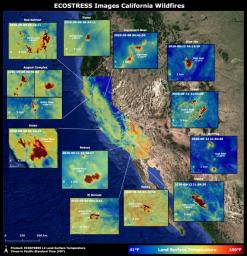
A graphic developed by Morancy during their internship with the ECOSTRESS mission shows the land surface temperatures at different locations throughout California. Image credit: NASA/JPL-Caltech | › Full image and caption
“I help with a lot of project management since SBG is in its early stages,” they say. “A lot of things are starting to cook up, and a lot of engineers and scientists are being onboarded to the team. I’m working with the team to help onboard, and I’m also helping with the science instruments for SBG.”
The magnitude of being part of SBG and the observatory team in their early stages is not lost on Morancy.
“I really believe it will have a long-lasting impact on how we look at climate change and how we target those specific issues to fix,” they say. “It'll be a major driver for future researchers and scientists.”
While Morancy hopes to combine Earth sciences and space exploration for their future career, they’re invested in studying our blue planet for the long run.
“I think Earth science is incredibly important because this is our only home,” they say. “Even though people are looking to settle on Mars and other celestial bodies ... I think it’s important to take care of this rock we’ve been given to live on. It’s crucial to make sure we take care of it for future generations.”
Rebecca Gustine
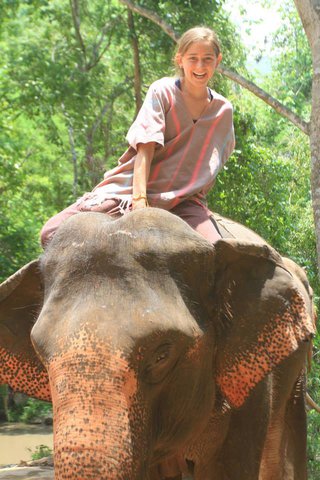
Image courtesy: Rebecca Gustine | + Expand image
When Rebecca Gustine studied abroad in Thailand during her junior year of college, she didn’t realize it would alter the course of her studies and her future career path.
“I had a lightbulb moment realizing how human development and access to water go hand in hand,” she says.
Gustine went on to Washington State University, where she is now a Ph.D. student studying civil engineering with a focus on water resources engineering.
“A lot of my undergraduate research had to do with water,” she explains. “It was from a global health perspective and had to do with access to clean water, hygiene, and gender dynamics in developing countries. I also really like math and physics, so combining global health with water resources engineering was very interesting.”
Gustine was so fascinated by water research, she knew she wanted to find an internship that would let her focus on just that. When she saw an open call for internships at JPL, she submitted her resume and was contacted by Gregory Halverson and Christine Lee, JPL scientists focused on using remote sensing measurements to study water quality, water resources, and ecosystems management.
Gustine started at JPL as an intern in August 2020, supporting the Earth science team by looking at how ECOSTRESS data could be used to preserve habitats in the California Bay Delta system, where the Sacramento and the San Joaquin Rivers meet. For the past year, she has focused on processing remote-sensing data and engaging with stakeholders. She was even first-author on a peer-reviewed paper.
“My work is basically using pictures [taken] from the sky that tell us information about the Earth and then making decisions about how to manage water resources and protect critical habitats,” she says.
Gustine is also well aware that her research comes at a pivotal time in the global conversation around Earth’s future.
“Given that climate change is having a profound impact on human and natural systems, we have to understand those changes and protect critical habitats and resources for the well-being of humans everywhere,” she says. “Changes in one component of a system can have cascading consequences for other parts of the system.”
While she works alongside others exploring the mysteries of worlds beyond Earth, Gustine is particularly proud to be part of pioneering research that could alter the future of our planet.
“Observing Earth is still space exploration, just from a different vantage point,” she says. “Given that NASA is the major proprietor of space, to look back at Earth using the same technology we use to go farther into space is important.”
Jonathan Vellanoweth
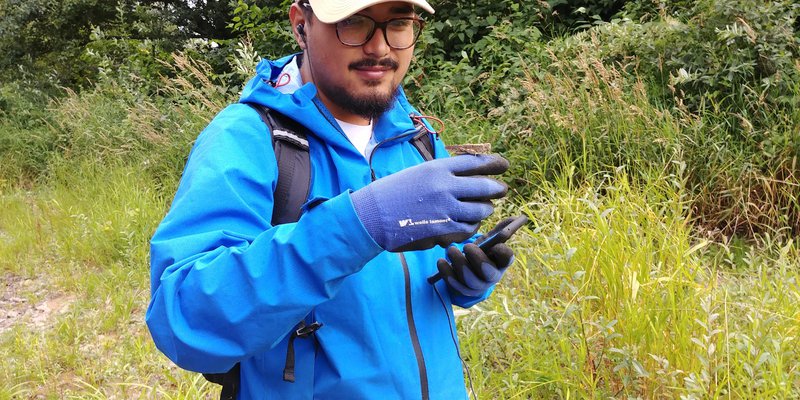
Image courtesy: Jonathan Vellanoweth | + Expand image
What will be the future, long-term impacts of power plants on our environment? Jonathan Vellanoweth is spending his time as a JPL intern working with a team to try to help answer that very question.
Vellanoweth is a student at Cal State University, Los Angeles, where he’s earning his master’s degree in environmental science with an emphasis in geospatial science. In his internship with the Surface Biology and Geology team at JPL, he's using data and satellite imagery from ECOSTRESS and the Landsat mission to detect thermal plumes emitted by power plants.
Vellanoweth’s work currently focuses on the Diablo Canyon Power Plant in San Luis Obispo, California.
“We’re looking at power plants that intake coastal waters to cool their reactors, then discharge it at a higher temperature back into the same water body,” he explains. “I’m using satellite imagery to detect that thermal change and outline the area of what is classified as a plume, or anywhere thermal discharge is heating up the ocean or the coast. We can see where this plume is moving over the year or several seasons, and other studies can use this data to see what the actual effects are on coastal communities.”
Vellanoweth has been fascinated by Earth science since as early as 7th grade, when he took his first environmental science class where he learned all about the scientific method and later went out into nature to collect soil samples and study them.
As a JPL intern, Vellanoweth has been particularly grateful for the variety of knowledge his colleagues provide him.
“The amount of support that you have from all these great scientists that work here is really what attracted me,” he says. “You can intern for a lot of places, but at JPL, you have all these colleagues you can meet with who have a lot of feedback they can give you. There are people on your team studying similar and dissimilar things as you, so they can provide you with something you might not have thought about and help expand your research.”
Most importantly, Vellanoweth is looking forward to the information everyone will have access to in the future thanks to the efforts of all the missions and projects within the Earth Science Observatory.
“I’m excited about getting things out there and making them accessible to the public. I’m really big on that because there are a lot of people who want to do this kind of research, but a lot of times, it can be hard to find the data or algorithm you need, and it’s a lot of trial and error,” he says. “SBG and ESO bring all of these things together and make it available for everyone.”
The laboratory’s STEM internship and fellowship programs are managed by the JPL Education Office. Extending the NASA Office of STEM Engagement’s reach, JPL Education seeks to create the next generation of scientists, engineers, technologists and space explorers by supporting educators and bringing the excitement of NASA missions and science to learners of all ages.
Career opportunities in STEM and beyond can be found online at jpl.jobs. Learn more about careers and life at JPL on LinkedIn and by following @nasajplcareers on Instagram.
TAGS: Interns, Colleges, Universities, Students, Higher Education, Internships, Student Programs, Year-Round Internship Program, Summer Internship Program, Earth Science, Earth, Climate Change, Earth System Observatory
Edu News | October 23, 2019
Mars Rovers and Navigation Tech Collide in NASA-JPL Education Program
Finding the best driving route for a Mars rover isn't as easy as turning on a navigation app – but John Park and Hiro Ono want to make it so. A program at NASA's Jet Propulsion Laboratory is helping them turn their idea into a reality, all while promoting diversity in STEM.
A tenure-track faculty member at North Carolina A&T State University, Park has spent the past two summers at JPL through an Education Office initiative designed to connect students and researchers from Historically Black Colleges and Universities (HBCUs) to the Laboratory's missions and science. The NASA-backed pilot program has brought more than a dozen student interns and several faculty researchers to JPL for projects investigating Mars, Earth and planets beyond our solar system.
Until his stint at JPL, Park's research focused solely on Earth-bound transportation technologies, such as those used by self-driving cars. When he learned about JPL's HBCU initiative from a colleague who had participated in the program, he seized on the chance to apply his research to space exploration.
"My previous projects and publications have dealt with decision-making tools for exploring uncertain areas on Earth and maximizing the information that's available," says Park, who also helped connect several students from North Carolina A&T to internship opportunities with the HBCU initiative. "I thought I could help bring that perspective to Mars rovers and helicopters."
While researching potential applications for his research at JPL, Park learned that the challenges of getting around on Mars are similar to those faced by drivers on Earth. Rovers also need to get from place to place safely and efficiently – they're just avoiding boulders instead of traffic jams.
It was precisely those challenges that Hiro Ono in JPL's Robotic Mobility Group also wanted to overcome. "I had an idea that I wanted to try, and we had all the ingredients," says Ono, who designs artificial intelligence systems for future rover missions. "The HBCU program allowed us to try the idea."
The HBCU initiative brought Park and Ono together along with Larkin Folsom, a student intern from North Carolina A&T. Together, the trio developed a proposal for a future system that would work similarly to the navigation apps we use to get through rush-hour traffic. The system would allow rovers to analyze routes as they drive, providing mission planners with information about the routes most likely to be hazard-free so they can make the most efficient use of the spacecraft's limited energy supply and maximize the mission's science goals.
"Previously, the way that we operated on Mars was to make the best guess about drivability solely from looking at orbital images," says Ono. "The idea that we are working on is to introduce the concept of probability. So if there are two terrains that are important to you but one of them is 90% traversable and the other is 60% traversable, which are you going to choose?"
In September, the National Science Foundation awarded Park, who submitted the proposal, with a grant to pursue the project. Park says the funding will go toward a JPL internship opportunity for a Ph.D. student from his university to continue research with Ono's team.
Jenny Tieu is a STEM education project manager at JPL who manages the HBCU initiative with Roslyn Soto. She helped connect Park and Ono and says it's collaborations like these that the initiative was designed to foster.
"Our goal with this initiative is to expand the number of HBCU students and faculty members participating in research at JPL and ultimately increase diversity among the Laboratory's workforce," says Tieu. "This National Science Foundation award is a positive indication that the initiative is not only building strong relationships between HBCUs and JPL, but also creating a ripple effect for additional opportunities."
Now in its fourth year, the HBCU initiative will once again bring students and faculty to JPL for research opportunities in the summer of 2020.
Meanwhile, Park and Ono are exploring ways to expand their technology into other arenas, including hurricane research and emergency response. Park has already received support from the U.S. Department of Transportation as well as the state DOT in Virginia and North Carolina for additional Earth-based applications of the technology.
Ono is serving as a consultant on the projects and has high hopes the results of the research will make their way back to JPL.
Says Ono, "In the long run, having an intern, giving them a good experience, helping their career is going to come back to us. We, as JPL, can build connections around the world and among industry partners that are going to come back to us eventually."
This Q&A is part of an ongoing series highlighting the stories and experiences of students and faculty who came to JPL as part of the laboratory's collaboration with historically black colleges and universities, or HBCUs. › Read more from the series
The laboratory’s STEM internship and fellowship programs are managed by the JPL Education Office. Extending the NASA Office of STEM Engagement’s reach, JPL Education seeks to create the next generation of scientists, engineers, technologists and space explorers by supporting educators and bringing the excitement of NASA missions and science to learners of all ages.
Career opportunities in STEM and beyond can be found online at jpl.jobs. Learn more about careers and life at JPL on LinkedIn and by following @nasajplcareers on Instagram.
TAGS: Higher Education, Internships, STEM, Engineering, HBCU, Research, Mars, Mars rovers, robotics, AI, navigation, universities, college, Asian Pacific American Heritage Month




